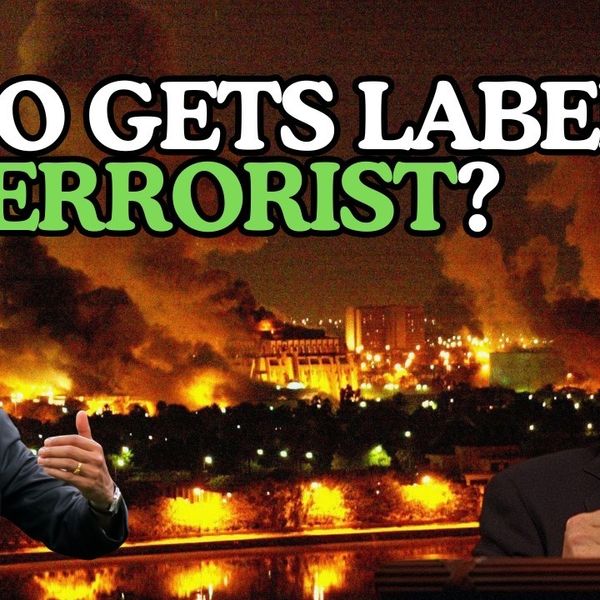The escalation of conflict in the Middle East will now apparently involve U.S. troops. President Biden has directed the deployment of the Terminal High Altitude Area Defense (THAAD) system to Israel, along with around 100 American soldiers needed to operate it. This is the first time that U.S. troops will have been sent to Israel since Hamas’ Oct. 7 assault.
This risk of further American involvement comes as the American public is increasingly against sending troops to fight Israel’s war. A survey conducted by the Chicago Council on Foreign Affairs released in August found that only about four in ten Americans supported sending troops to defend Israel if it were attacked by its neighbors, down from around 55% until 2021. This decision to deploy to Israel so close to the November election is made as general sympathies for Israel have slipped to a low of 33% amongst Americans polled in Sept. 2024.
After Israel assassinated several Hamas, Iranian, and Hezbollah officials, Iran retaliated with a missile barrage that was restricted largely to military targets and caused minor damage and no Israeli deaths. Following Iran’s assault, Israeli officials have been explicit in their intent to continue the cycle of violence. “Our strike will be powerful, precise, and above all – surprising,” Israeli Defense Minister Yoav Gallant said. “They will not understand what happened and how it happened.”
Israel has reportedly been planning its retaliation to Iran’s Oct. 1 attack, some experts believe that the THAAD defense system is an indication that this response may be imminent, and severe. Middle East expert Aaron David Miller says that Israel’s next assault will likely be “so comprehensive that the Iranians will have to respond.”
Military expert at Defense Priorities, Daniel Davis, says placing American troops in harm's way carries significant risk. “Naturally, if Americans are killed in the execution of their duties, there will be howls from the pro-war hawks in the West ‘demanding’ the president ‘protect our troops’ by firing back on Iran,” he said, adding,“if he wants to protect our service members, then don't put them into someone else's war. This is exactly the sort of thing that gets nations sucked into war they have no interest in fighting.”
The United States deployed missile defense systems to Israel during the 1991 Gulf War when Israel was facing threats from Iraqi mobile Scud launchers. But Americans were already fighting Iraqi troops in the region, thus not contributing to regional escalation or making Americans more vulnerable than they already were. The Quincy Institute’s Adam Weinstein also notes that the U.S. deployed THAAD systems to Iraqi Kurdistan where U.S. personnel face risks, but, he added, Washington sending them to Israel now “makes U.S. troops part of Israel’s conflict with Iran.”.
“The Biden administration keeps saying that they want to prevent a wider war, and yet every time they send Israel more money and weapons and now American soldiers, they are causing the violence to spread,” said Quincy Institute Middle East Research Fellow Dr. Annelle Sheline. “They must be aware of this, and therefore they are lying when they say they don't want a regional war.”
Weinstein says that with U.S. troops in the region targeted by Iranian-aligned militias and Houthi fighters off of the Yemeni coast, further entangling America in Israel’s regional conflict with Iran needs to be further scrutinized. “While we don’t know what’s been agreed upon behind closed doors, events over the past year give plenty of reason to doubt that Israel will consider U.S. interests in exchange for its support," he said.- Poll: Most Americans don't want to send troops to defend Israel ›
- Biden is letting Israel trap the US into war with Iran ›
- Biden’s mixed messages to Israel are coming home to roost ›
- Why Hezbollah doesn't want a full-scale war. Yet. ›
- Israel using US election to take free hand against Gaza, Lebanon | Responsible Statecraft ›
- Deadline: US says Israel failing in aid efforts. What happens now? | Responsible Statecraft ›
- By the numbers: Dramatic increase of US military in Middle East | Responsible Statecraft ›
- Israel plans massive Iran payback with Middle East on edge ›
- U.S. officials say Israel has narrowed down its targets for strike on Iran ›
- US deploying THAAD missile defence system, troops to Israel ... ›
- Hezbollah leader Hassan Nasrallah killed in Israeli strike | AP News ›
- Israel and Hezbollah Are Escalating Toward Catastrophe | Foreign ... ›















